How can a mind map for schizophrenia simplify understanding such a complex condition? Schizophrenia mind maps visually organize symptoms, causes, and treatments, providing clarity for patients, educators, and mental health professionals. By mapping this intricate information, these tools empower better communication, learning, and care management.
1.Understanding Schizophrenia Through a Mind Map
Schizophrenia is a complex mental health condition affecting how individuals think, feel, and behave. Understanding its multifaceted nature can be overwhelming, but a mind map simplifies this process. By visually organizing symptoms, causes, and treatments, a mind map offers clarity and structure, making it an invaluable tool for mental health professionals, educators, and patients alike.
2.What Is a Schizophrenia Mind Map?
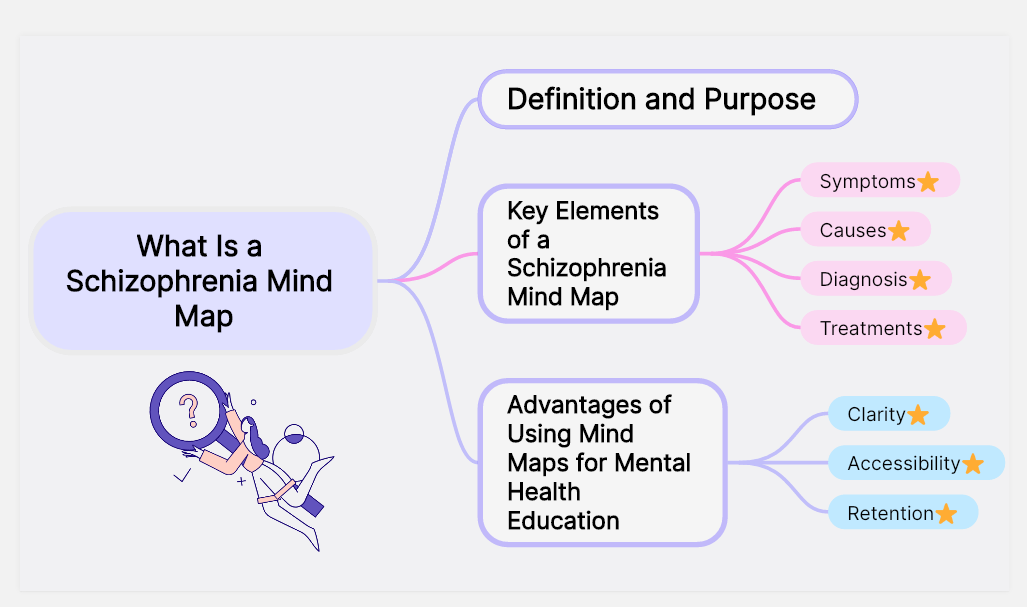
Definition and Purpose
A schizophrenia mind map is a visual representation that organizes all relevant information about the condition, including its symptoms, diagnosis, and management.
Key Elements of a Schizophrenia Mind Map
- Symptoms: Positive, negative, and cognitive.
- Causes: Genetic, environmental, and biochemical factors.
- Diagnosis: Criteria and tools for assessment.
- Treatments: Medication, therapy, and lifestyle adjustments.
Advantages of Using Mind Maps for Mental Health Education
- Clarity: Simplifies complex information into manageable sections.
- Accessibility: Easy to understand for both professionals and non-experts.
- Retention: Improves learning and recall through visual organization.
3.Core Symptoms of Schizophrenia
Schizophrenia is a complex mental health disorder that affects how a person thinks, feels, and behaves. It often manifests in various ways, which can be grouped into three main categories of symptoms: positive, negative, and cognitive.
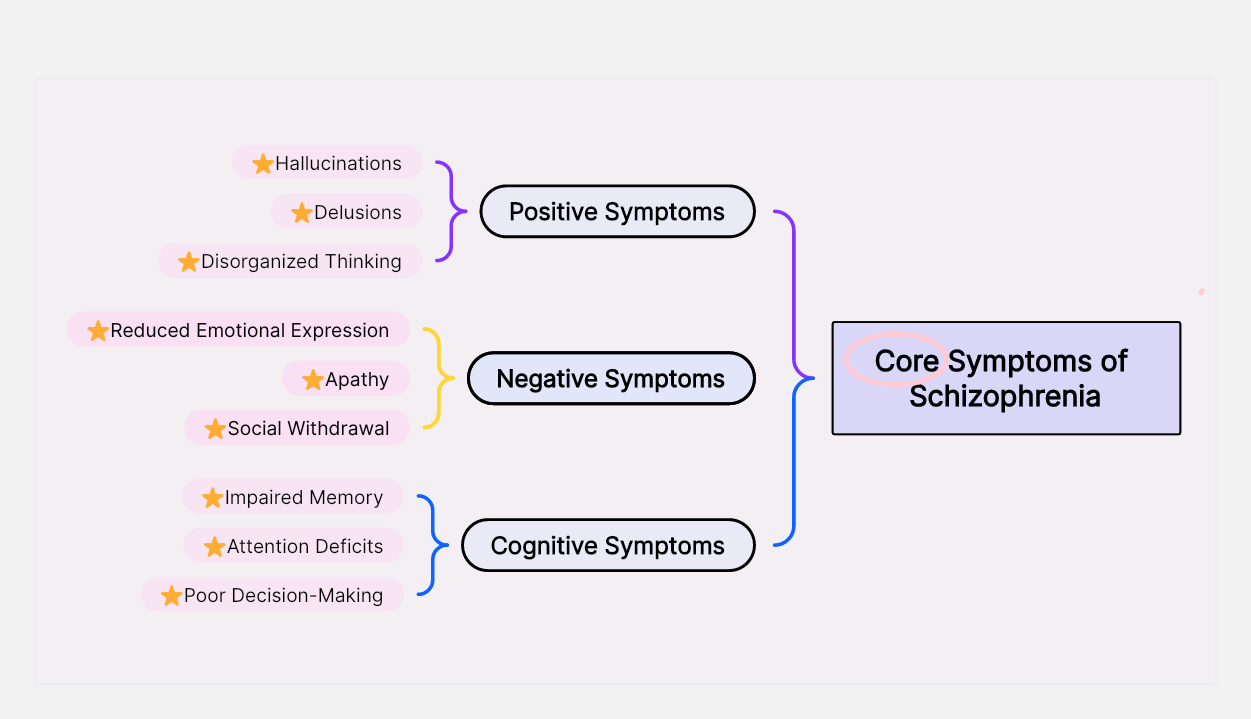
Positive Symptoms are behaviors or experiences that are added to a person's usual functioning:
- Hallucinations: Experiencing things that aren’t actually there, such as hearing voices or seeing things.
- Delusions: Strong, unfounded beliefs, like thinking someone is out to harm them or that they have special powers.
- Disorganized Thinking: Struggling to organize thoughts or express ideas clearly, making conversations hard to follow.
Negative Symptoms refer to a reduction or absence of certain abilities or emotions:
- Reduced Emotional Expression: A person may show little or no facial expression or speak in a monotone voice.
- Apathy: A lack of interest or motivation to engage in daily activities, such as work or hobbies.
- Social Withdrawal: Avoiding social interactions or losing interest in relationships.
Cognitive Symptoms affect the mental processes necessary for learning, memory, and decision-making:
- Impaired Memory: Difficulty recalling recent events or remembering important details.
- Attention Deficits: Trouble staying focused on tasks or conversations.
- Poor Decision-Making: Struggling to make logical or thoughtful decisions, often leading to poor choices.
Understanding these symptoms is crucial for recognizing schizophrenia and providing effective support to those affected.
4.Exploring Treatments for Schizophrenia
There are various treatment options available that address different aspects of the disorder, from medications to psychotherapy and lifestyle changes. Here’s an overview of the most effective approaches.
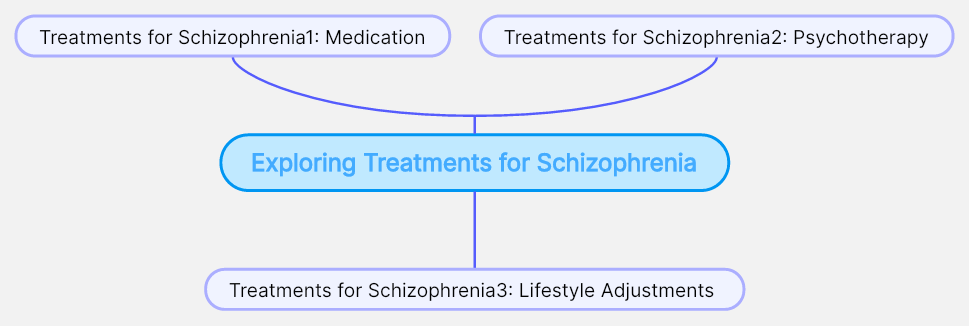
Treatments for Schizophrenia1: Medication
Medication plays a vital role in managing schizophrenia by helping to correct the chemical imbalances in the brain:
- Antipsychotic Drugs: Medications like risperidone or olanzapine are commonly prescribed to reduce the intensity of symptoms such as hallucinations and delusions.
Treatments for Schizophrenia2: Psychotherapy
Psychotherapy offers valuable tools for individuals to understand and manage their thoughts and behaviors:
- Cognitive-Behavioral Therapy (CBT): This therapeutic approach helps individuals identify and challenge harmful thought patterns, teaching coping mechanisms to improve mental health.
- Family-Focused Interventions: These programs help families understand schizophrenia, equipping them with strategies to provide effective support and care for their loved ones.
Treatments for Schizophrenia3: Lifestyle Adjustments
Lifestyle Adjustments can also play a key role in improving mental health and managing symptoms:
- Regular Routines: Establishing consistent daily schedules helps provide structure and stability.
- Physical Activity: Regular exercise can help reduce stress and improve overall mood and energy levels.
- Stress Management: Techniques like mindfulness, meditation, or relaxation exercises can help alleviate stress, which often exacerbates symptoms.
Support Systems are essential for long-term recovery and well-being:
- Peer Groups and Mental Health Communities: Connecting with others who have similar experiences provides emotional support and encouragement.
- Family Support: Having a strong, informed support system at home can make a significant difference in the recovery process.
By combining medical treatment with therapy, lifestyle changes, and support, individuals with schizophrenia can better manage their symptoms and lead fulfilling lives.
5.Creating an Effective Schizophrenia Mind Map
Creating a clear and comprehensive mind map for understanding schizophrenia can be an effective way to organize information and communicate complex ideas. Boardmix provide user-friendly tools and features that are especially helpful for mental health professionals, educators, and anyone looking to gain a deeper understanding of this condition.
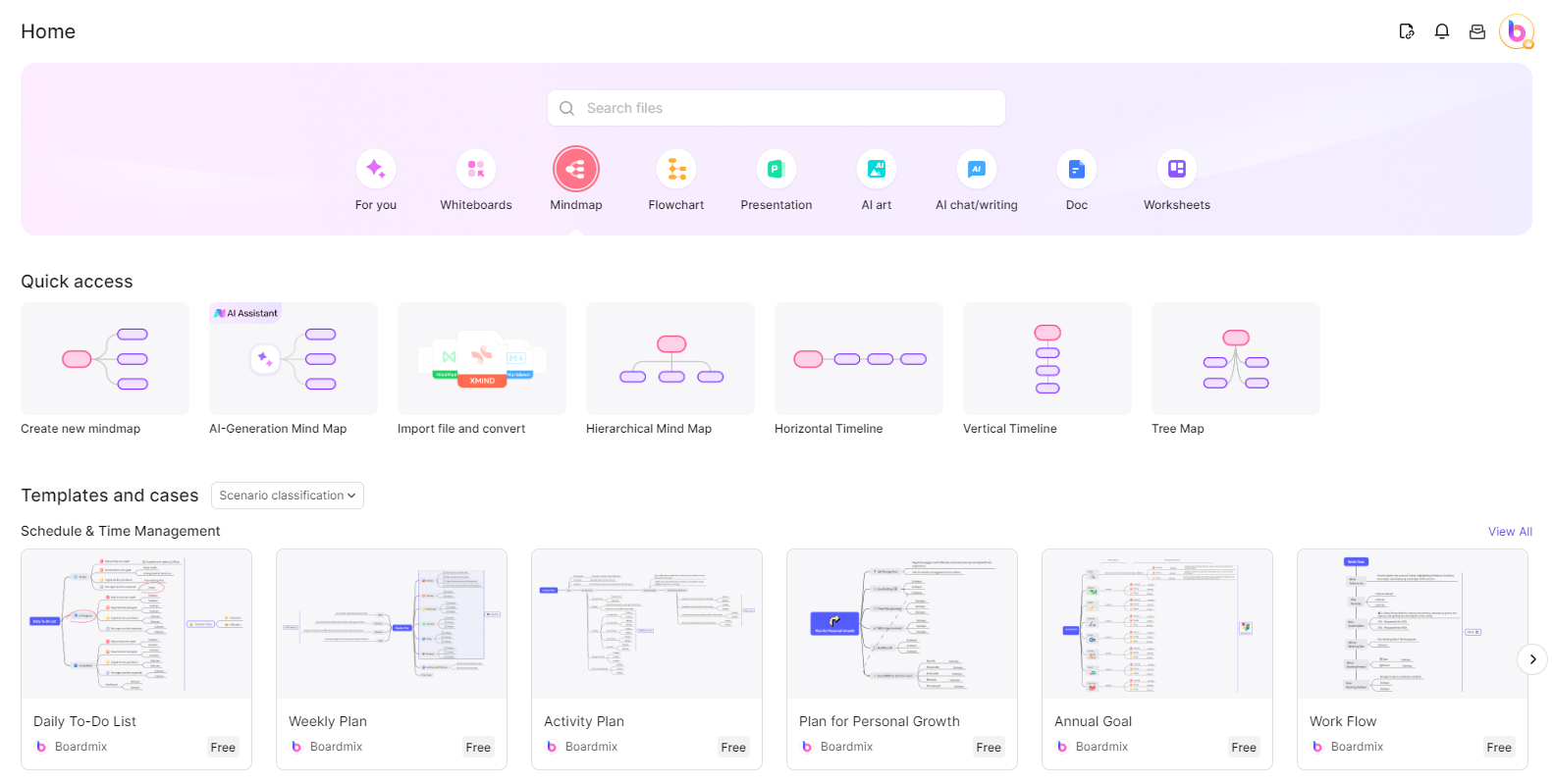
Boardmix: Simplifying Mind Map Creation for Schizophrenia
Boardmix makes it easier to create mind maps with features that are tailored for mental health professionals and educators:
Templates: Ready-made mind map templates for schizophrenia and other mental health topics save time and offer a structured approach.
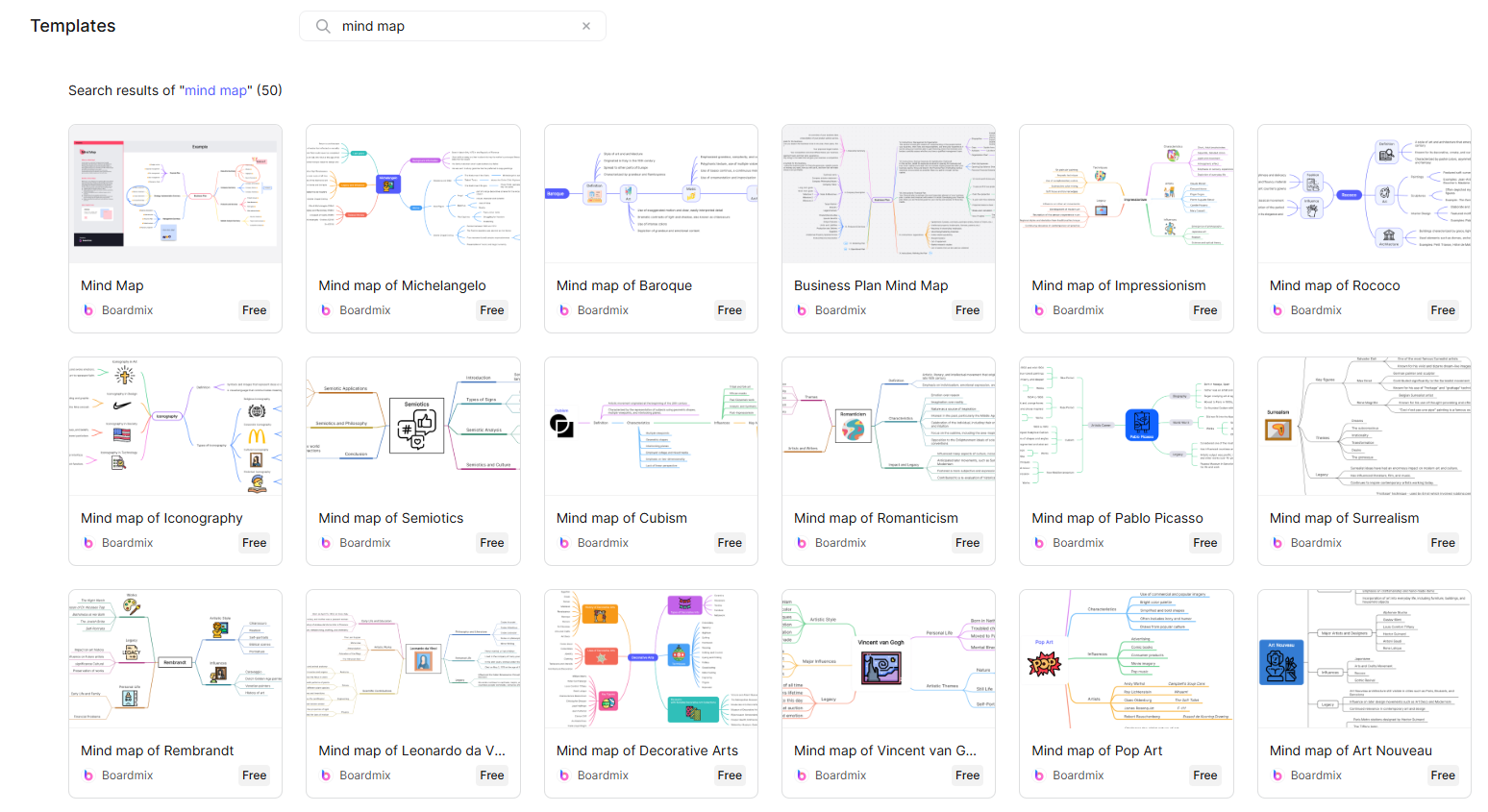
Collaboration Tools: These tools allow for real-time brainstorming, collaboration, and updates, making it easier for teams to work together.
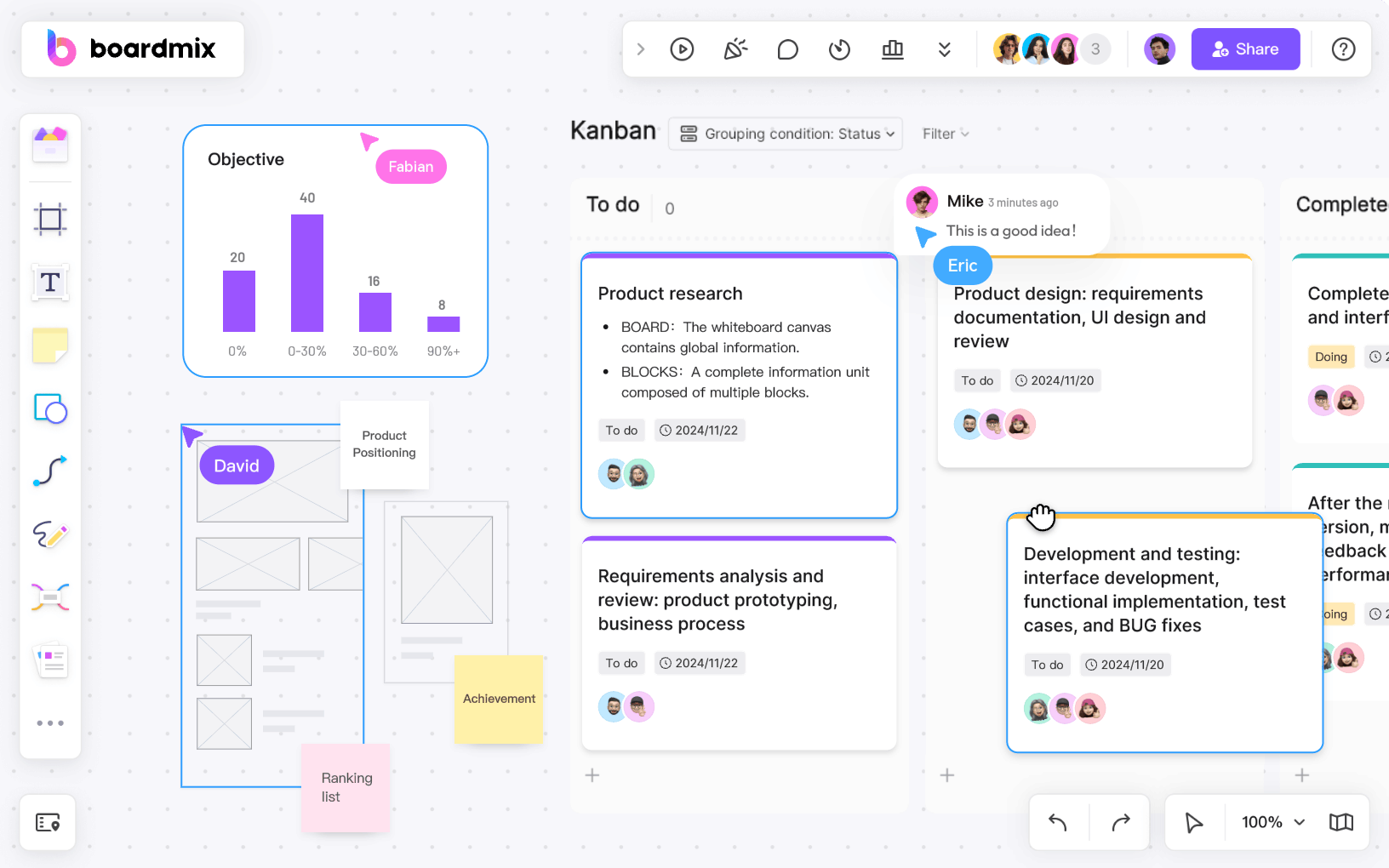
- Integration: Boardmix works seamlessly with other productivity tools, helping you maintain an efficient workflow.
Tips for Creating a Schizophrenia Mind Map
The mind map can help break down essential concepts into clear, manageable pieces. Here are some tips for creating an effective schizophrenia mind map.
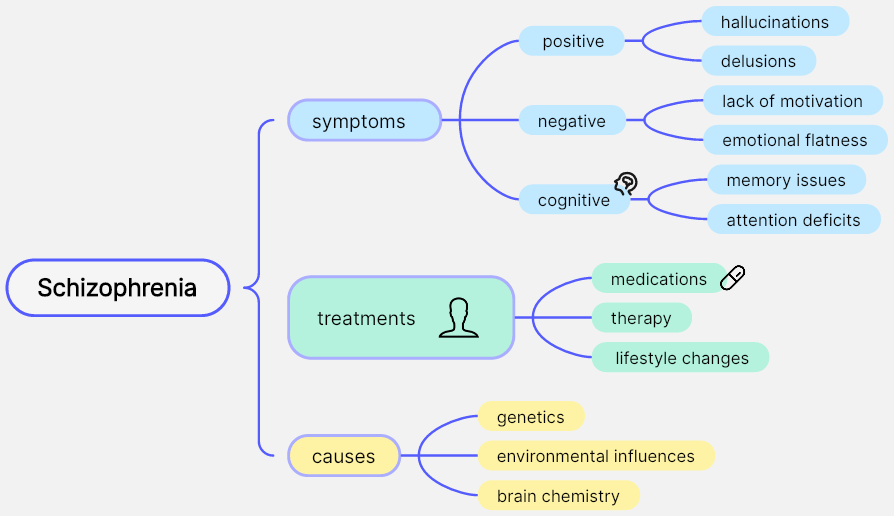
Start with a Clear Central Topic
Begin your mind map by placing the word "Schizophrenia" at the center. This will be the focal point of your map, and all other related topics will branch out from here. It’s important to keep the central topic broad and simple so that the map stays focused on the core subject.
Create Main Branches for Key Topics
Once you have your central topic, create branches for the main aspects of schizophrenia. These can include:
- Symptoms: Break this down into positive (hallucinations, delusions), negative (lack of motivation, emotional flatness), and cognitive (memory issues, attention deficits) symptoms.
- Causes: Consider factors like genetics, environmental influences, and brain chemistry.
- Treatments: Include both medications (e.g., antipsychotics), therapy (such as Cognitive Behavioral Therapy), and lifestyle changes (exercise, stress management).
These main branches form the skeleton of your map, making it easier to navigate and understand.
Expand with Subtopics for Detailed Insights
After you have your main branches, add smaller sub-branches for further details. For example, under Symptoms, you could break it down into specific types like “visual hallucinations” or “lack of emotional expression.” This will help you explore each aspect of schizophrenia more deeply and comprehensively.
Use Color and Icons to Enhance Clarity
To make the mind map visually appealing and easy to understand, use color-coding for different categories. For example, use blue for symptoms, green for treatments, and yellow for causes. This helps quickly differentiate between topics at a glance.
You can also add icons to represent key points such as pills for medications, a person for therapy, or a brain for cognitive symptoms. These symbols provide a visual cue and make the map more intuitive.
Link to External Resources for Further Exploration
For a more interactive and informative mind map, consider adding external links. These could lead to research articles, videos, or support websites that offer more in-depth explanations of specific aspects of schizophrenia. This is especially useful for those looking to dive deeper into the subject matter.
Make it Collaborative
Mind maps are not only great for individual use but also for collaboration. If you’re working in a team, use platforms like Boardmix that allow real-time collaboration. This way, multiple people can contribute their knowledge, making the mind map richer and more accurate.
By following these tips, you can create a visual, easy-to-understand map that simplifies the complex information related to schizophrenia.
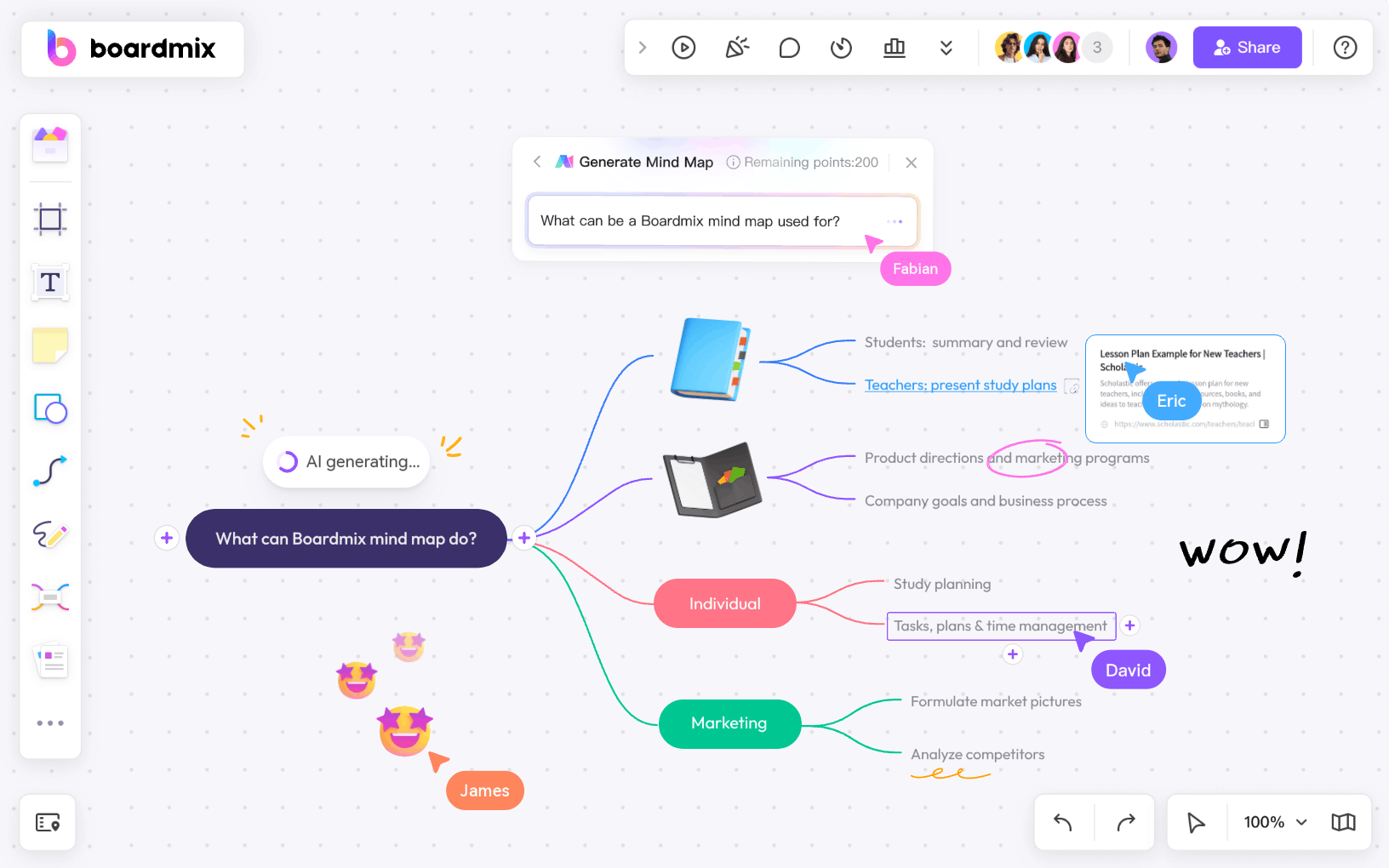
6.Real-Life Application of Schizophrenia Mind Maps
Mind maps are a versatile tool that can be used in a variety of real-life settings to enhance understanding and improve care for individuals with schizophrenia. By organizing complex information in a clear and visual way, mind maps help both patients and professionals better grasp key concepts and make more informed decisions.
For Patients
Mind maps offer a simple and effective way for individuals with schizophrenia to understand their condition. By visualizing their treatment plan, symptom tracking, and overall journey, patients can feel more in control of their care. A mind map provides a clear overview of their goals, treatments, and progress, which can be motivating and help them stay focused on their recovery.
For Healthcare Providers
For doctors, therapists, and mental health professionals, mind maps help organize diagnostic criteria, plan treatment workflows, and monitor patient progress in a structured way. By using mind maps, providers can identify key areas of concern, develop comprehensive treatment strategies, and track improvements or changes in a patient's condition. This makes it easier to make adjustments as needed and ensures that nothing is overlooked in the care process.
For Educators
In educational settings, mind maps are a powerful tool for presenting complex topics like schizophrenia in an engaging and easy-to-understand way. Whether in a classroom, workshop, or training session, educators can use mind maps to break down intricate mental health concepts into digestible parts. This approach helps students and participants better grasp the material and encourages active engagement and discussion.
Overall, mind maps are an invaluable tool for improving communication, supporting patient care, and enhancing education around schizophrenia. They simplify complex information, making it easier to understand, retain, and act upon.
7.The Bottom Line
A schizophrenia mind map is an invaluable tool for organizing and understanding complex information about the condition. It benefits patients, healthcare professionals, and educators by simplifying and visually structuring essential details. With Boardmix, creating detailed and collaborative mind maps has never been easier. Empower yourself with the knowledge and tools to manage and educate others about schizophrenia effectively. Try Boardmix today for free!









